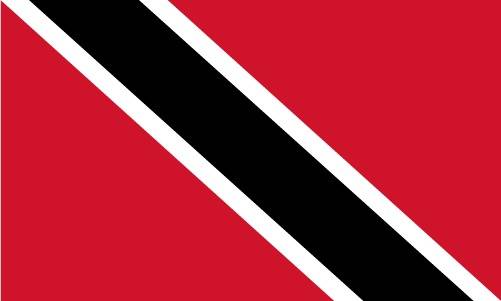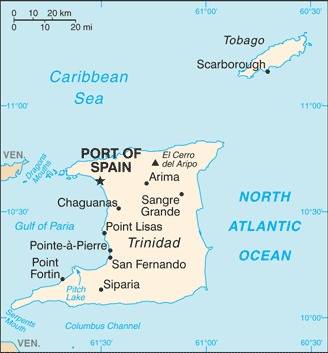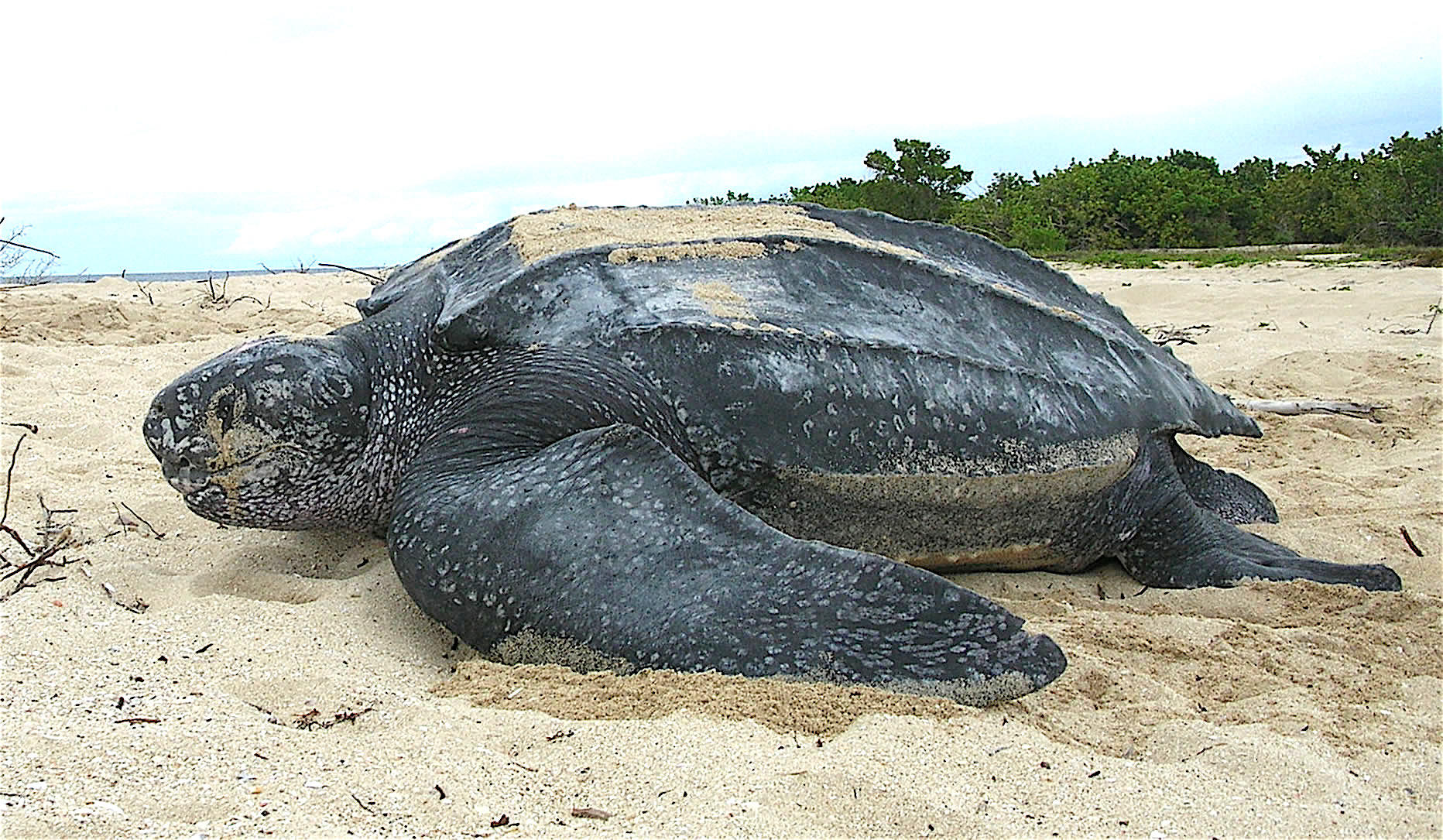34 Trinidad and Tobago

Red with a white-edged black diagonal band from the upper hoist side to the lower fly side. The colors represent the elements of earth, water, and fire. Black stands for the wealth of the land and the dedication of the people. White symbolizes the sea surrounding the islands, the purity of the country’s aspirations, and equality. Red symbolizes the warmth and energy of the sun, the vitality of the land, and the courage and friendliness of its people.
Flag courtesy of the CIA World Factbook

Map courtesy of CIA World Factbook

Trinidad and Tobago is a major nesting site for Leatherback Turtles.
Government
According to Britannica, the first constitution of independent Trinidad and Tobago, promulgated as a British Order in Council (1962), provided for a governor-general appointed by the British monarch, a cabinet, and a bicameral Parliament, consisting of a Senate and a House of Representatives. Under the constitution adopted in 1976, Trinidad and Tobago is a republic. The head of state is the president, who is elected by the Parliament; the prime minister is the head of government. The president appoints the prime minister from the House of Representatives—almost always the leader of the majority party.
The members of the House of Representatives are elected by universal adult suffrage every five years; the members of the Senate are appointed by the president on the advice of the prime minister and the minority party leader, except for a number of independent senators appointed at the president’s sole discretion. Senators serve until the dissolution of Parliament or upon the request of the president that they vacate office. The voting age is 18.
Since 1980 Tobago has had a separate House of Assembly consisting of 12 members elected by district at a primary election, four appointed councillors, and a presiding officer, who may or may not be a member of the assembly. In January 1987 Tobago was granted full internal self-government, insofar as such self-government does not conflict with the unitary state as provided by the constitution. The legislation provides for a measure of devolution of executive powers in areas such as revenue raising and collection, agriculture, industry, tourism, environmental conservation, and social services.
Trinidad is divided into 14 local government authorities: 2 city councils (Port of Spain and San Fernando), 3 borough councils (Arima, Chaguanas, and Point Fortin), and 9 counties.
Trinidad and Tobago Civil Aviation Authority
The Trinidad and Tobago Civil Aviation Authority (“the Authority”) was established by the Trinidad and Tobago Civil Aviation Authority Act, No. 33 of 2000. This Act was replaced by the Civil Aviation Act, No. 11 of 2001 (the “Act”), which came into effect on November 01, 2001.
Airspace
SkyVector – Google Maps – ADS-B Exchange
ICAO countries publish an Aeronautical Information Publication (AIP). This document is divided into three parts: General (GEN), En Route (ENR) and Aerodromes (AD). ENR 1.4 details the types of airspace classes they chose to adopt from classes A through G.
Trinidad and Tobago AIP (you need a user name and password)
Drone Regulations
Visit No Fly Zones Webmap to determine whether your operations will fall within a No Fly Zone.
Advanced Air Mobility (AAM) Regulations & Policies
None found by the author.
However, should you, the reader, happen to stumble across something to the contrary, please email the author at FISHE5CA@erau.edu and you may be mentioned in the ACKNOWLEDGEMENTS section of this book by way of thanks for contributing to this free eBook!
Advanced Air Mobility (AAM) News
None found by the author.
However, should you, the reader, happen to stumble across something to the contrary, please email the author at FISHE5CA@erau.edu and you may be mentioned in the ACKNOWLEDGEMENTS section of this book by way of thanks for contributing to this free eBook!
Short Essay Questions
Scenario-Based Question
You have been hired by a Drone Startup Company. Your boss has immediately assigned this job to you.
They need you to prepare a one-page memo detailing the legalities of using a drone to find turtles in Trinidad and Tobago on Maracas Beach, pictured above.
They need you to mention any national laws and local ordinances.
They specifically want to know what airspace (insert pictures) you will be operating in and whether or not you need an airspace authorization.
Does it matter whether or not you are a citizen of the country?
Lastly, there is a bonus for you if, as you scroll through this chapter, you find any typos or broken links!
Short Essay Questions
- What are the drone categories?
- How is registration addressed?
- How is remote ID addressed?
- What are the model aircraft rules?
- What are the commercial drone rules?
- Are there waivers or exemptions to the rules? If so, for what?
- Would you share a link to an interactive airspace map?
- How is BVLOS addressed?
- How can you fly drones at night?
- How can you fly drones over people?
- Where do you find drone NOTAMs?
- What are the rules for drone maintenance?
- What are the rules for an SMS program?
- What are some unique rules not mentioned above?
- What are the C-UAS rules?
- What are the AAM rules?

